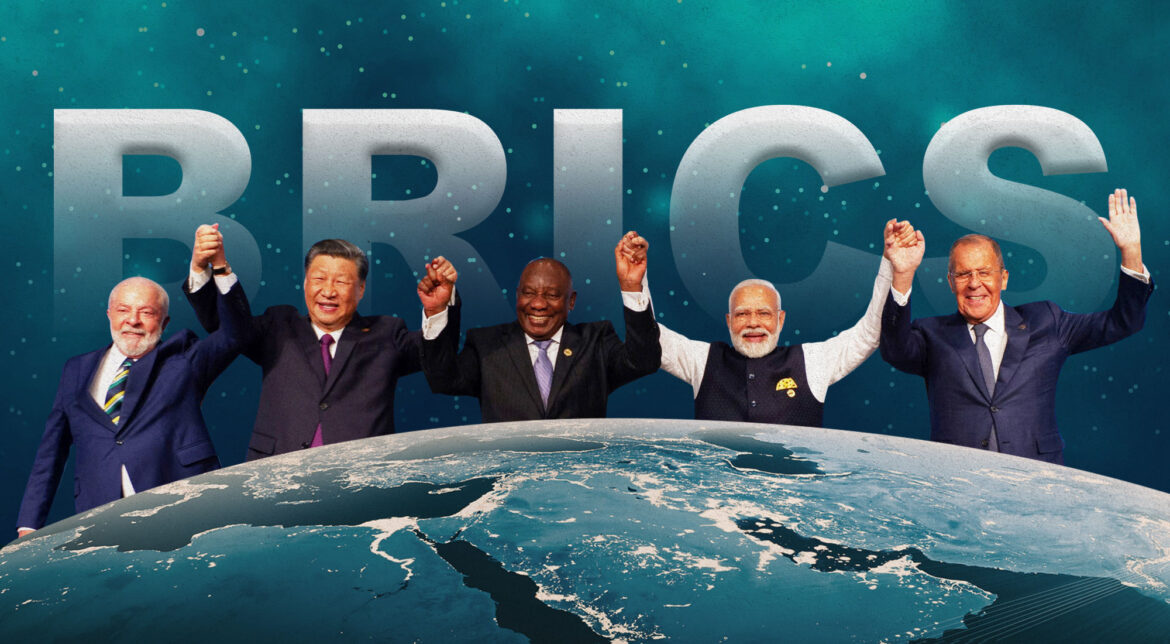By Desmond Nleya | International Affairs Contributor
The geopolitical landscape is increasingly defined by the rivalry and cooperation among powerful blocs, notably BRICS and the G7. These groupings represent two contrasting visions of global governance—one rooted in traditional Western influence and the other emerging from a multipolar world order driven by developing economies.
Against this backdrop, escalating conflicts such as the war in Ukraine, the humanitarian catastrophe in Gaza, and tensions involving Iran further underscore the fragility of global peace. The role of former U.S. President Donald Trump in shaping or destabilizing these dynamics remains a matter of intense global debate.
BRICS vs G7: A Clash of Visions
G7—comprised of the United States, Canada, Germany, France, the United Kingdom, Italy, and Japan—has long functioned as the elite club of Western economic powerhouses. Founded in the 1970s, the G7 promotes liberal democracy, global free trade, and collective security under U.S.-led NATO influence. Though it has expanded its scope to include climate change, global health, and development issues, critics argue that the G7 often enforces Western-centric policies that exclude the Global South.
BRICS—originally Brazil, Russia, India, China, and South Africa—has emerged as a counterweight to Western hegemony. With the recent expansion that includes Iran, Egypt, Ethiopia, Argentina, Saudi Arabia, and the United Arab Emirates, BRICS is evolving into a powerful voice for the Global South. It challenges dollar dominance, advocates for multipolarity, and supports development frameworks outside the Bretton Woods institutions like the IMF and World Bank.
While the G7 promotes a rules-based order, BRICS questions the fairness of those rules, especially when Western sanctions and military interventions disproportionately affect non-Western nations. The establishment of the New Development Bank and a growing push for trading in local currencies indicate BRICS’s desire to reshape the global financial system.
Ukraine War: East-West Confrontation Reignited
The ongoing Russia-Ukraine war, sparked by Russia’s 2022 invasion, has reignited Cold War tensions. The West, led by NATO and G7 countries, has supplied Ukraine with military and financial aid, while BRICS member Russia portrays the conflict as a reaction to NATO’s expansionist policies. The war has destabilized global food and energy markets and raised the specter of a broader East-West military confrontation.
Gaza Conflict: A Persistent Tragedy
The Israeli-Palestinian conflict, particularly the devastating war in Gaza since October 2023, has brought unparalleled suffering to civilians. The humanitarian crisis, marked by thousands of deaths, destruction of infrastructure, and displacement, has divided international opinion. The U.S. and most G7 nations continue to back Israel’s right to self-defense, while BRICS members—especially South Africa, China, and Russia—have condemned Israeli actions and called for immediate ceasefires and humanitarian interventions. South Africa even filed a genocide case against Israel at the International Court of Justice, indicating a growing Global South assertiveness.
Iran: Sanctions, Resistance, and Regional Power
Iran remains a critical flashpoint in global politics. Tensions with the West, especially over its nuclear program and its regional influence in Iraq, Syria, Lebanon, and Yemen, persist. The U.S.’s “maximum pressure” campaign under Trump, including the assassination of General Qassem Soleimani, pushed Iran further from diplomacy. BRICS’ recent acceptance of Iran into its ranks marks a significant geopolitical shift, potentially offering Tehran an economic lifeline and strategic legitimacy outside the Western order.
Trump’s Legacy: Peace or Provocation?
Donald Trump’s foreign policy, branded as “America First,” had significant global repercussions. Supporters argue that he avoided new wars, engaged directly with North Korea, and pressed NATO members to increase their defense spending. His administration also brokered the Abraham Accords, normalizing relations between Israel and several Arab states, which was seen as a historic move toward Middle East peace.
However, critics point out that Trump withdrew from key peace and climate accords, including the Iran Nuclear Deal and the Paris Agreement, increasing global instability. His divisive rhetoric, withdrawal from multilateralism, and preference for unilateral sanctions further strained U.S. alliances. His actions often empowered authoritarian leaders and weakened international norms.
In the conflicts cited—Ukraine, Gaza, and Iran—Trump’s policies arguably exacerbated tensions. By abandoning the Iran nuclear deal, he undermined diplomatic avenues. His pro-Israel stance alienated Palestinians, setting the stage for future unrest. And his ambiguous relationship with Putin did little to deter Russian aggression.
The world today is characterized by a deepening ideological and strategic divide. BRICS and the G7 represent two visions for the global future: one pushing for multipolarity and the inclusion of the Global South, the other defending the established liberal international order. Conflicts in Ukraine, Gaza, and Iran are not isolated incidents—they are manifestations of these global power struggles.
Donald Trump’s legacy is mixed; while avoiding full-scale wars, his diplomacy often lacked the strategic depth to ensure long-term peace. As the world faces climate change, migration crises, and digital warfare, the need for inclusive global governance and genuine peacebuilding is greater than ever. Whether BRICS and the G7 can find common ground—or continue to fracture the world along geopolitical lines—will define this era of international relations.


